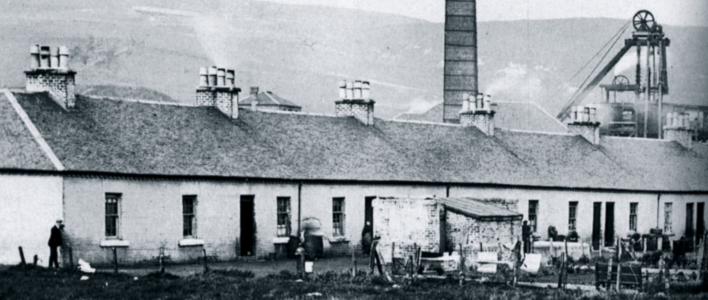In October 2021, our project leader Prof Arthur McIvor visited the site of Benwhat accompanied by local Councillor Drew Filson. Here’s his reflections on the visit:
Local councillor Drew Filson has a deep, emotional attachment to the ‘lost village’ of Benwhat (sometimes referred to as Benquhat). His father was born there, and lived there until he was 19. Drew’s father’s and mother’s ashes are scattered on the site of his grand-parents home up on the hill overlooking Dalmellington and the beautiful Doon Valley.
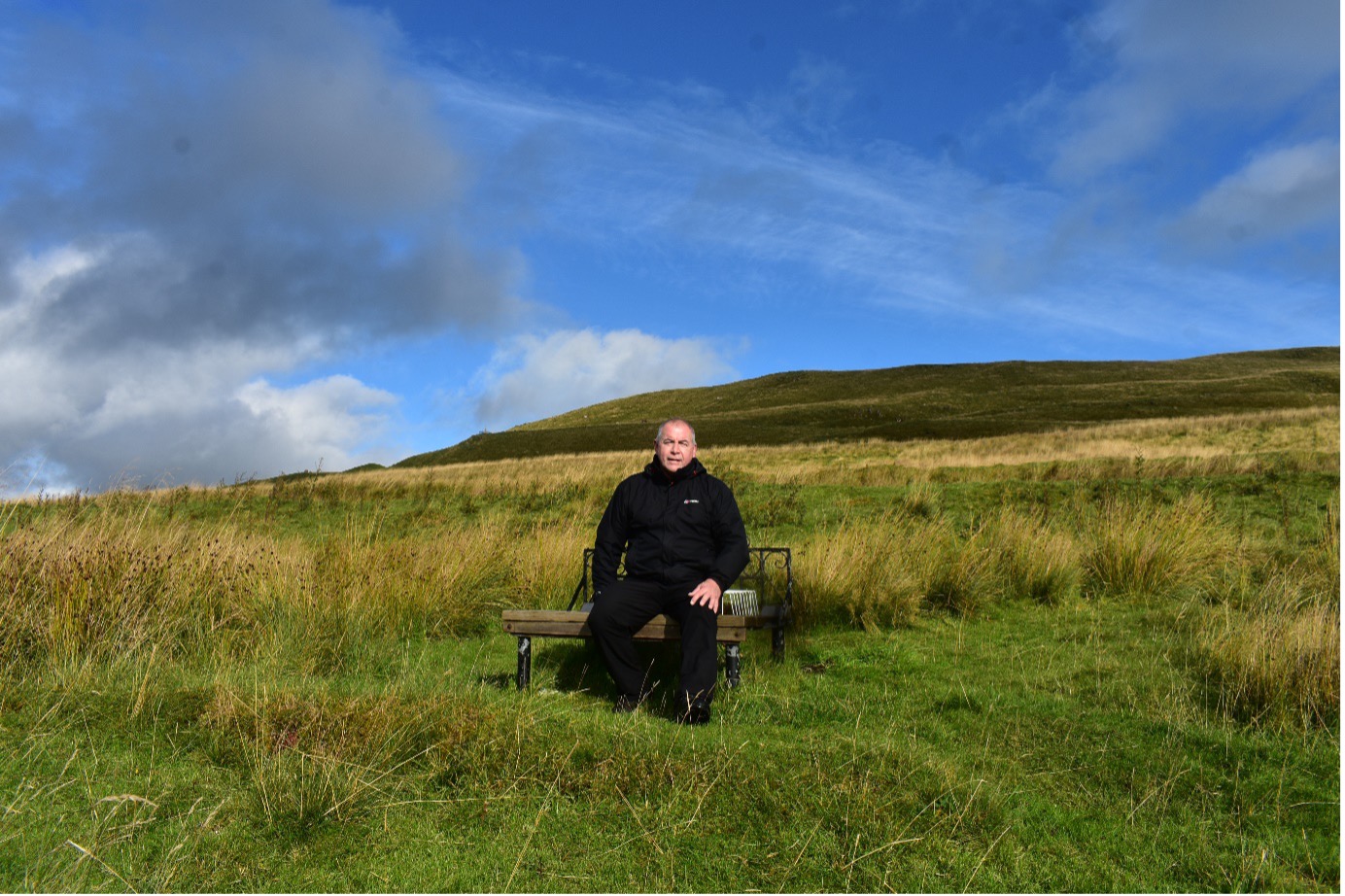
CLLR DREW FILSON AT THE MEMORIAL BENCH OF HIS GRAND-PARENTS BENWHAT HOME WHERE THEIR ASHES ARE SCATTERED (Image reproduced with permission from Arthur McIvor)
Drew has a profound personal attachment to Benwhat and is a prominent activist in the long campaign to preserve its history and heritage and to make the story of Benwhat accessible to a wider audience. He organised a major reunion of surviving residents who he arranged to be bused up to the site a decade ago in 2011, which included his late father. They were entertained in a marquee, guided across the ruins of the village and the old school, with passionate memories stimulated by the prompt of the tolling of the original school bell, lovingly rescued and in Drew’s possession. This has all been captured in film. More recently Drew and his two sons, son-in-law and grandson hauled by hand a life-size metal Tommy silhouette sculpture, together with a 3×2 concrete base, right up the hill above the village to the First World War monument (erected a century ago in 1921, commemorating the 22 villagers that lost their lives in the war). It now sits resplendent within the railings that Drew arranged to renovate with the help of East Ayrshire Council.
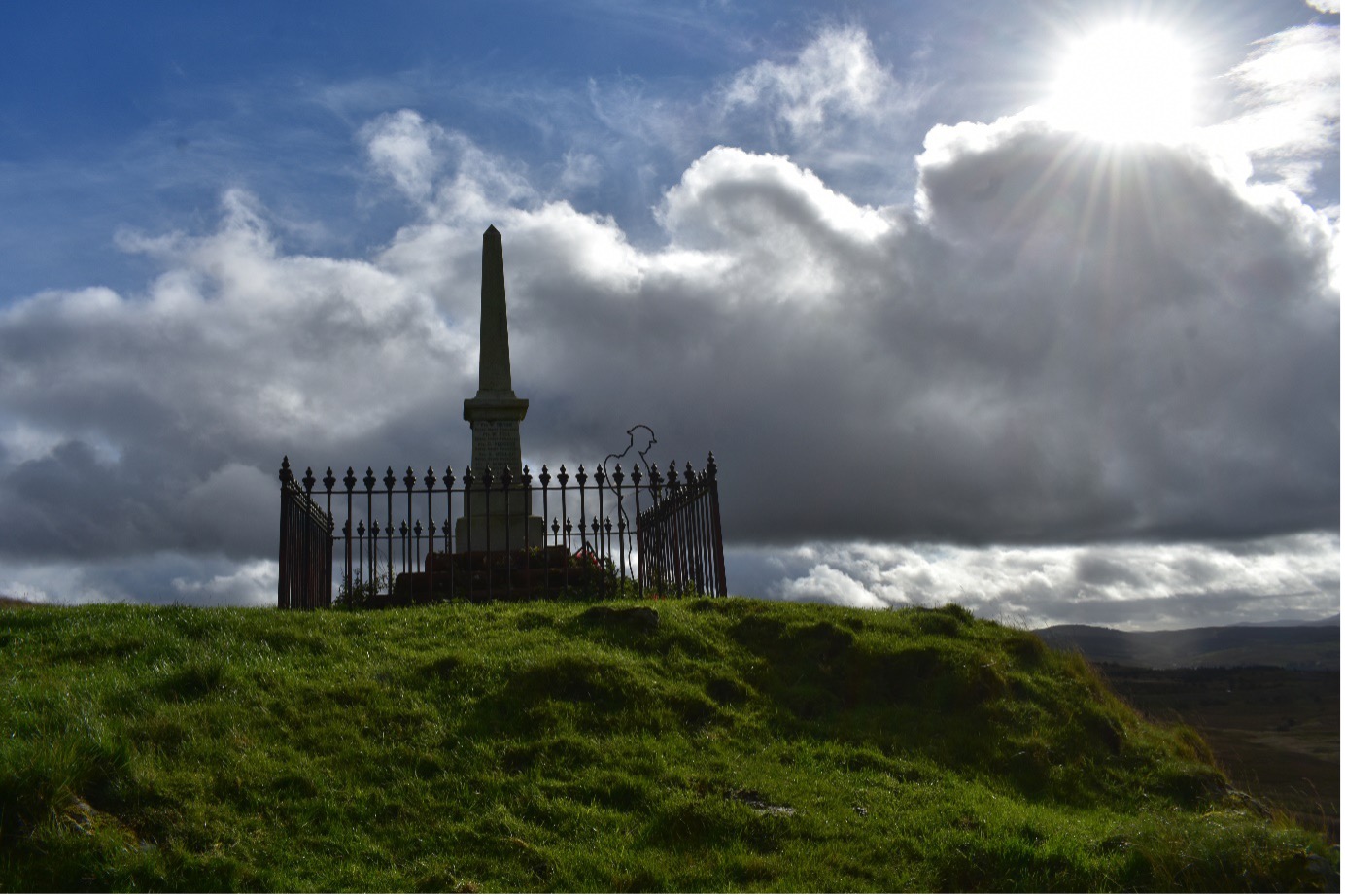
BENWHAT FIRST WORLD WAR MONUMENT (ERECTED 1921), WITH THE TOMMY SILHOUETTE STATUE (Image reproduced with permission from Arthur McIvor)
Drew generously devoted the day to taking me on the long hike from Dalmellington to Benwhat, along the way sharing his deep and intimate local knowledge of the social and cultural history of the village. Benwhat was demolished (1952) after most of the final residents, some 460, were decanted in 1951, mostly to council housing in Bellsbank, near Dalmellington. And there are few physical remains on site beyond the footprint of the miners’ rows, some walls of the ‘new’ school and the war memorial. Next to the school you can still see clearly the football field where the Benwhat Heatherbell team played.
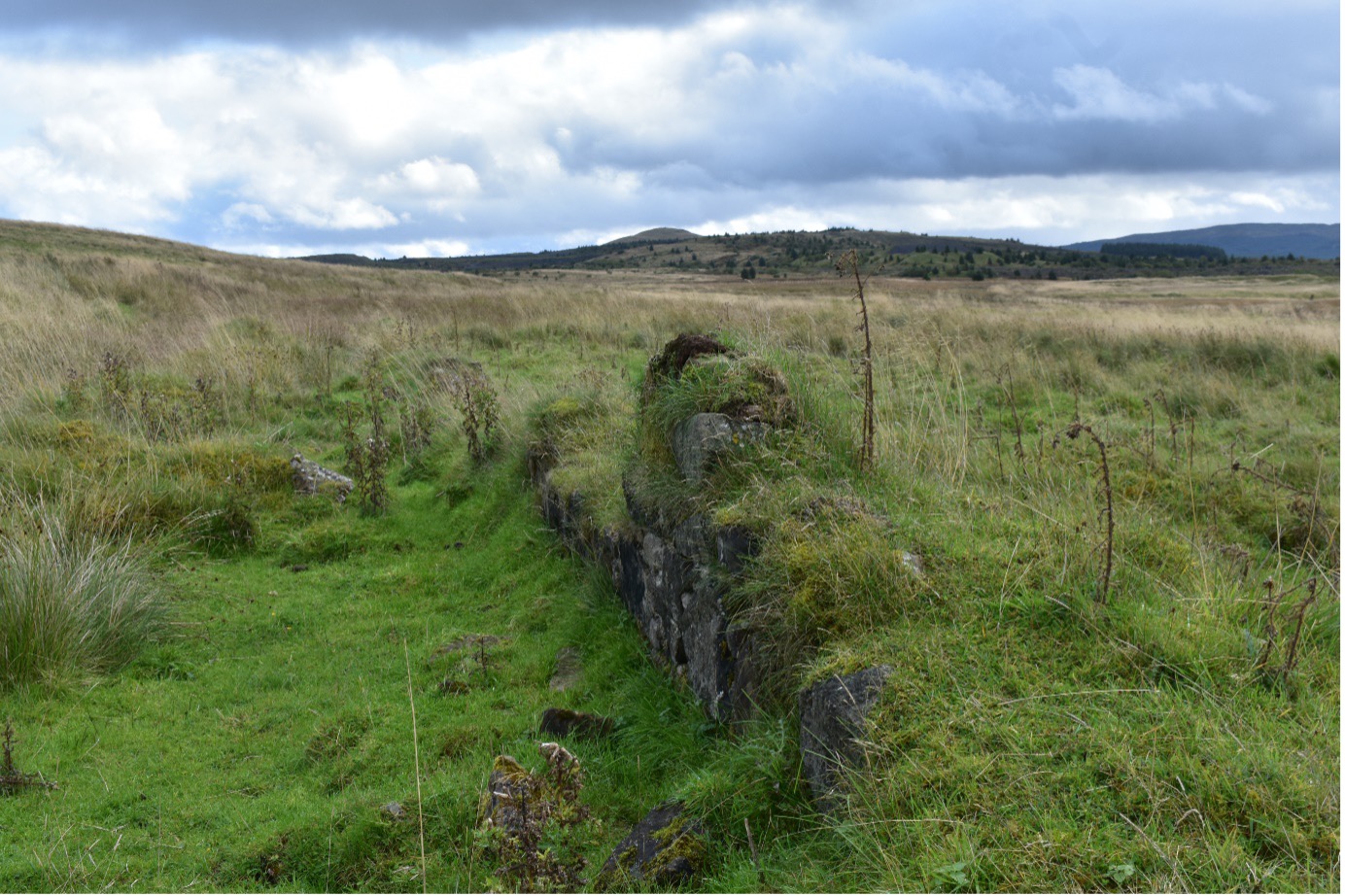
LAST REMNANTS OF THE BENWHAT MINERS’ ROWS (LAIGHT ROW) (Image reproduced with permission from Arthur McIvor)
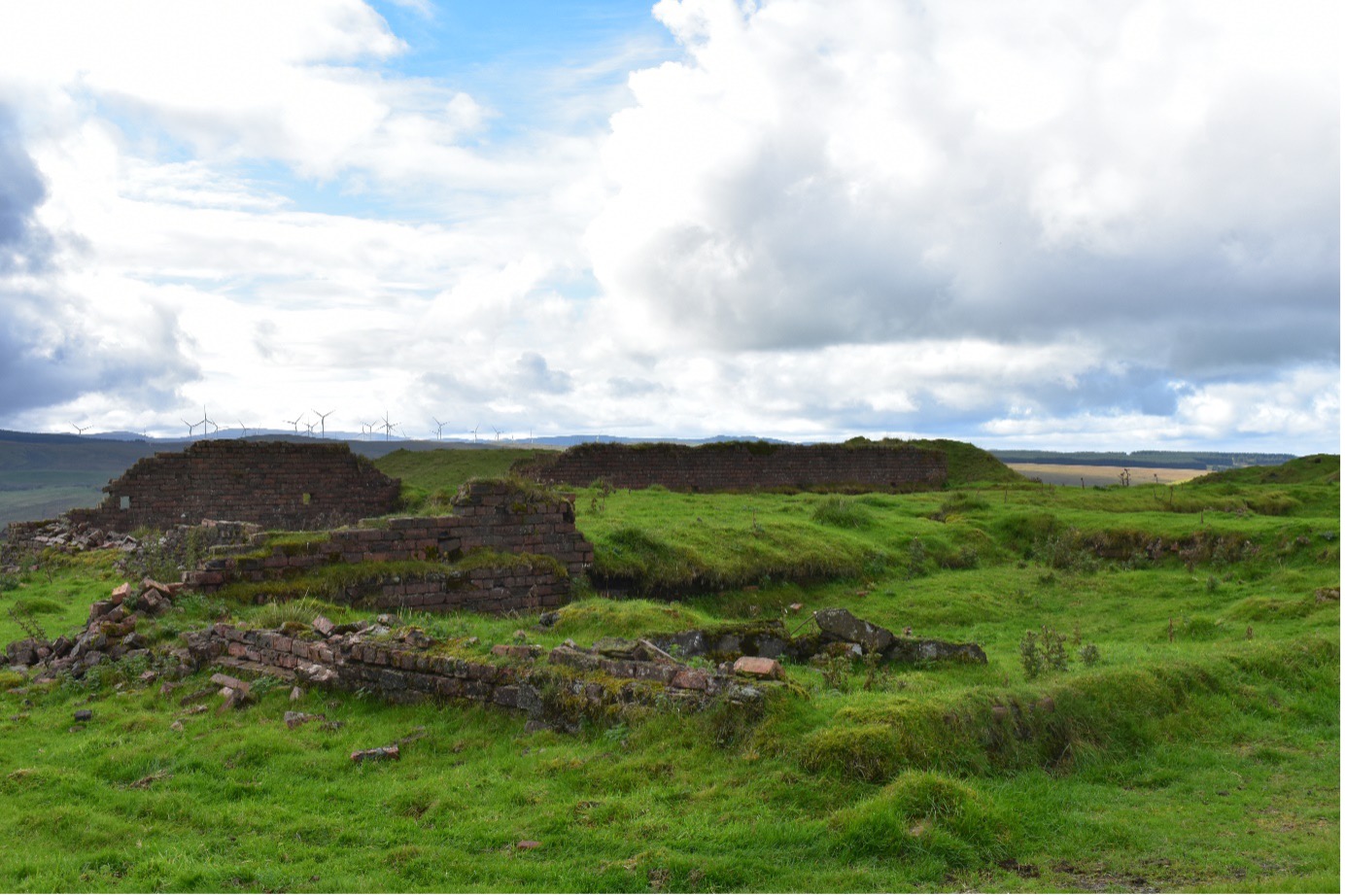
THE REMAINS OF THE ‘NEW’ BENWHAT SCHOOL (built 1926) (Image reproduced with permission from Arthur McIvor)
There is rather more left of the buildings in the nearby settlement of Corbie Craigs, where there were ten miners’ houses. You can make out the single 20 feet by 12 feet rooms, the scullery to the rear and the outhouses, which have been better protected from the ravages of time by their concrete roofs.
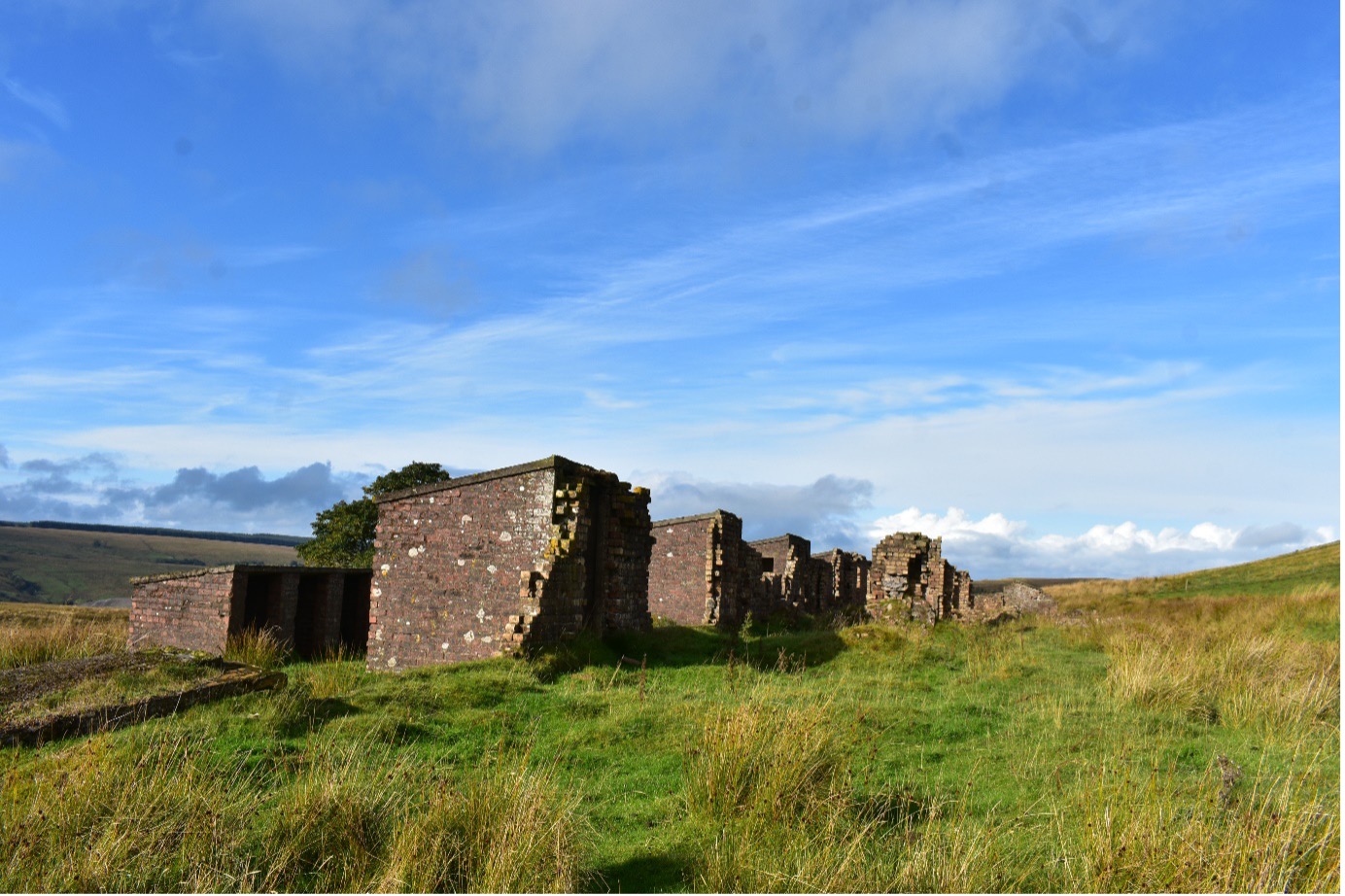
CORBIE CRAIGS MINERS’ HOUSES (Image reproduced with permission from Arthur McIvor)
Drew commented on the many Benwhat ex-residents who have contacted him to arrange a return to the village to scatter their relative’s ashes. The visitors ‘book’, retained under a seat as you enter the village site, includes many emotional comments of returning to the village, to see where they or their loved ones once lived and worked. The book was the idea of Drew’s cousin Scott Filson when he, William McCluskey and the late Bill Rowan erected the Benwhat stone (see the final image below) as you enter the site. Glancing through the hand-written entries made me think of just how much meaning and significance Benwhat had for its former residents and their children. This also comes through the wonderful evocative autobiography of Alice Wallace, Benquhat – Then What, who was born in the village in 1946. Clearly the place was cherished and attachments persisted over time. There is some nostalgia here, but it goes beyond that. Whilst the living conditions in the rows were cramped and notoriously poor, there was a way of life associated with community spirit, camaraderie, independence and freedom, in villages like Benwhat in its heyday that is lost today in our more busy and consumerist existence. Perhaps the lives lived within this working class culture was better? We can learn much from rediscovering and preserving tangible and intangible evidence of it, such as the stories of residents and their children. Poignantly, dotted across the sites of the now disappeared miners’ rows are plaques and a couple of benches (including one for Drew’s mother-in-law’s Kirk family home) memorialising past residents who lived in the village.
By Prof Arthur McIvor (Project Leader)
If you family, like Drew’s came from the village of Benwhat we would love to hear your stories about their life in a Lost Villages. Contact us here
You can also find out more about Benwhat here
Local songwriter Seán Gray has also recently released Ghaists, based on the poetry of Rab Wilson about the village. You can find out more here
